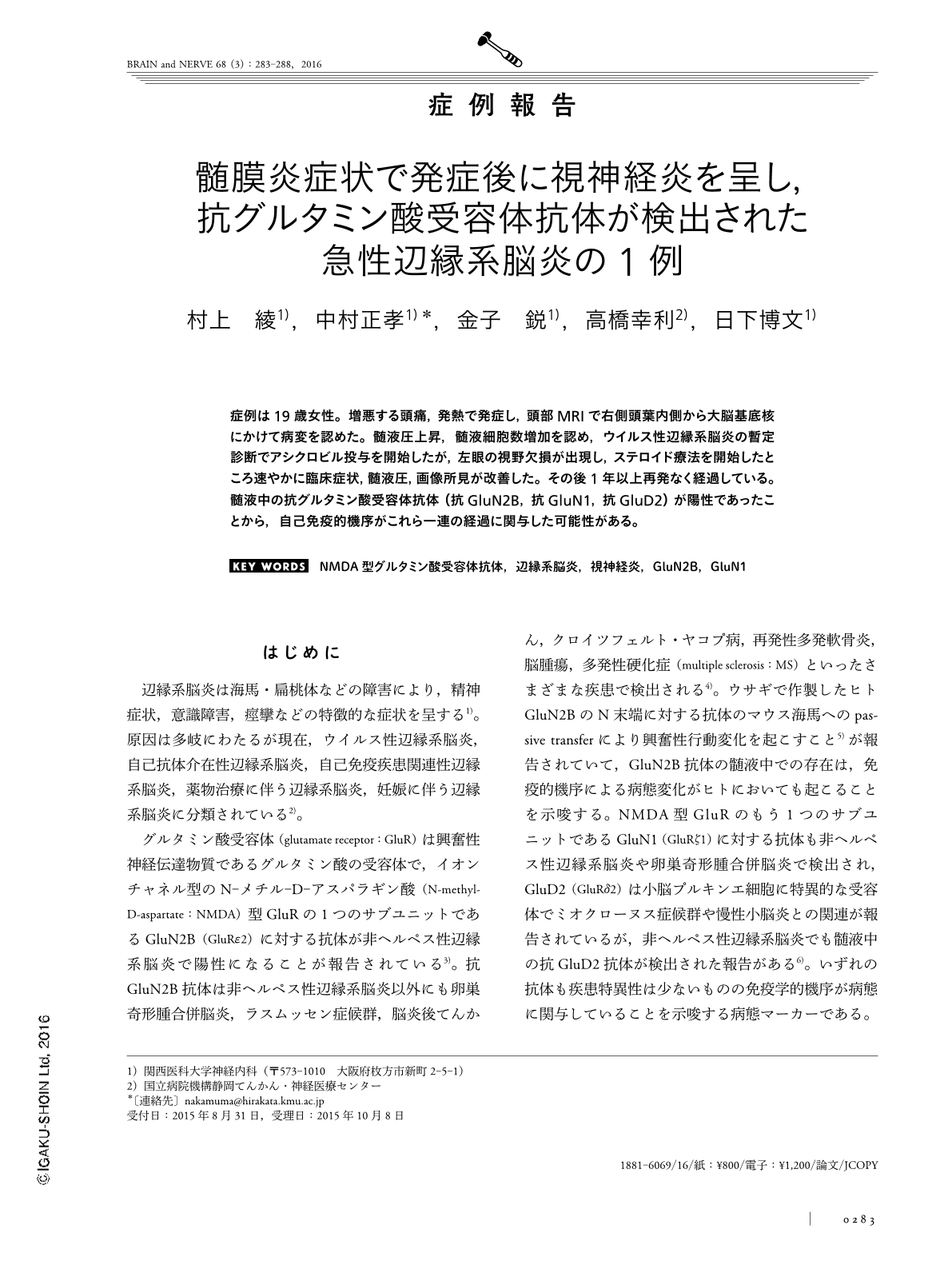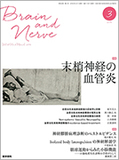Japanese
English
- 有料閲覧
- Abstract 文献概要
- 1ページ目 Look Inside
- 参考文献 Reference
症例は19歳女性。増悪する頭痛,発熱で発症し,頭部MRIで右側頭葉内側から大脳基底核にかけて病変を認めた。髄液圧上昇,髄液細胞数増加を認め,ウイルス性辺縁系脳炎の暫定診断でアシクロビル投与を開始したが,左眼の視野欠損が出現し,ステロイド療法を開始したところ速やかに臨床症状,髄液圧,画像所見が改善した。その後1年以上再発なく経過している。髄液中の抗グルタミン酸受容体抗体(抗GluN2B,抗GluN1,抗GluD2)が陽性であったことから,自己免疫的機序がこれら一連の経過に関与した可能性がある。
Abstract
A 19-year-old woman presented with headache and fever. Cerebrospinal fluid (CSF) analysis revealed increased pressure (>200 mmH2O) and pleocytosis. Brain MRI showed high intensity in the medial part of the right temporal lobe, insular regions, and basal ganglia of the right hemisphere on fluid attenuated inversion recovery images. Based on a tentative diagnosis of limbic encephalitis caused by viral infection, acyclovir therapy was started. However, 10 days after admission, a right superior temporal quadrantanopia developed in the left eye. MRI detected abnormal intensity in the left optic nerve on short tau inversion recovery images. After three courses of steroid pulse therapy, the optic neuritis quickly improved and the patient was maintained on subsequent oral administration of prednisolone, without relapse for one year. The CSF was positive for anti-glutamate receptor (GluR) antibodies (GluN2B, GluN1, and GluD2); however, anti-N-methyl-D-aspartate receptor antibody was not detected in both serum and CSF with cell-based asseys. Compared to previously reported anti-GluR positive cases combined with optic neuritis, the clinical outcome of our patient was short, with good prognosis. Our results indicate that an autoimmune mechanism involving anti-GluR antibodies contributes to the pathogenesis of optic neuritis as well as limbic encephalitis.
(Received August 31, 2015; Accepted October 8, 2015; Published March 1, 2016)

Copyright © 2016, Igaku-Shoin Ltd. All rights reserved.


